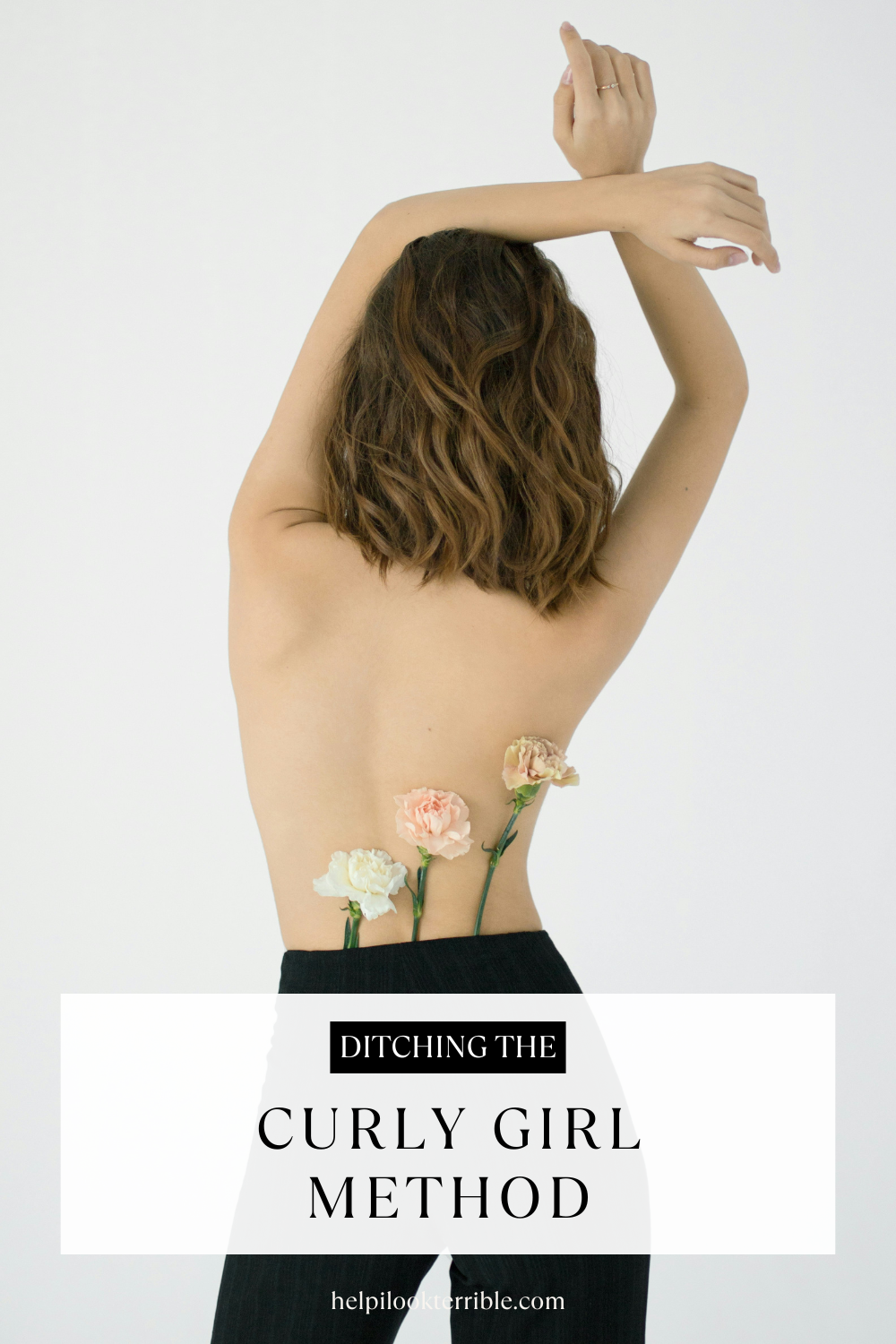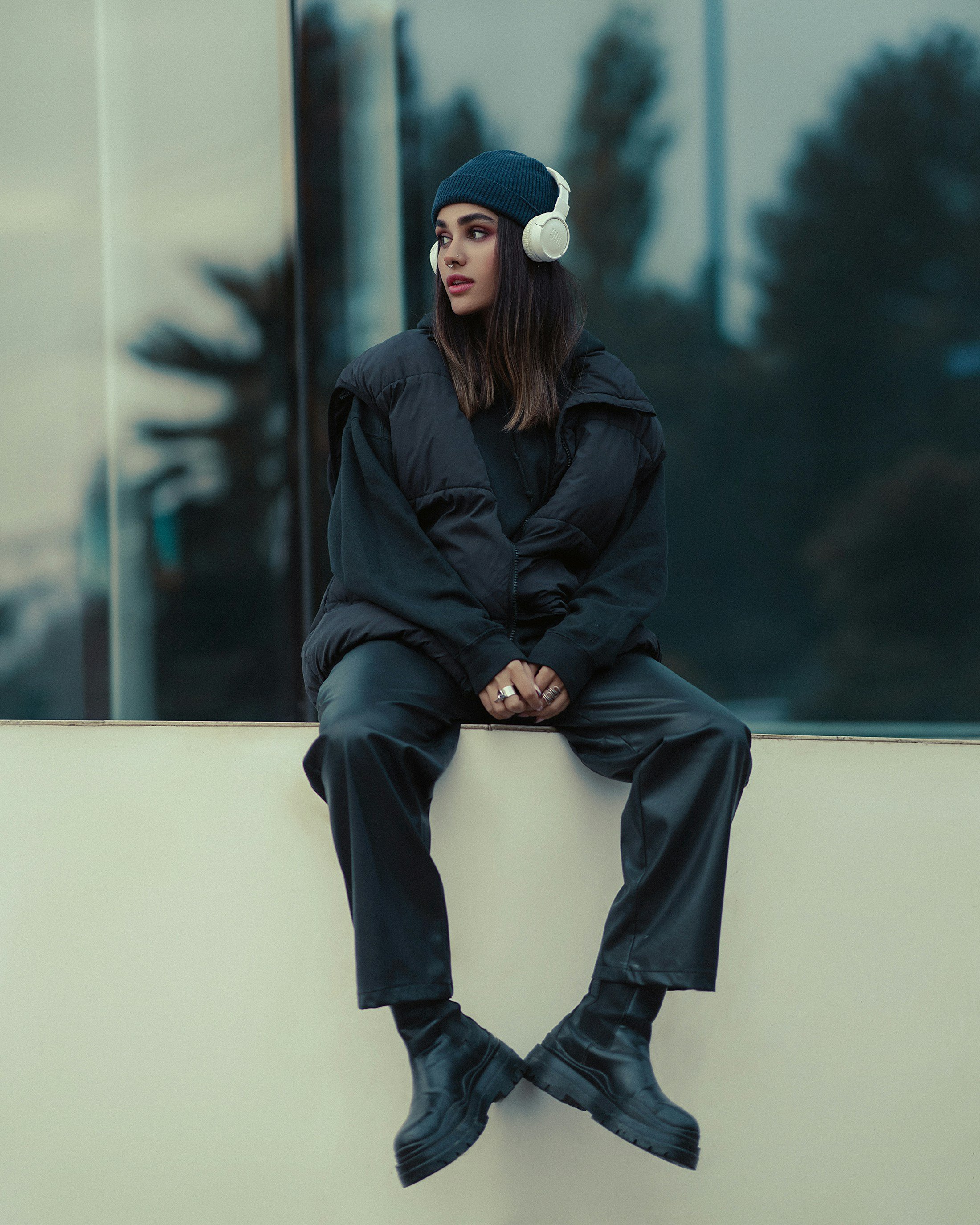I ditched the curly girl method and my hair has never looked better: How to use sulfates and silicones properly
I tried to follow the curly girl method for years, even though it wasn’t working. When I changed my approach, my hair completely transformed. Here’s what actually helped my fine, curly hair.
I tried to follow the curly girl method for years, even though it wasn’t working. When I changed my approach, my hair completely transformed.
If you’ve been following the curly girl method but still feel like your hair never really gets clean, or if your products seem to stop working — you’re not alone. The same thing happened to me, and I had no idea why.
Like a lot of people with waves or curls, I found the curly girl method when my hair was damaged and I was desperate for a solution. I couldn’t believe there was a whole routine designed for hair like mine. I was SO excited — and at first, it worked.
I was growing out bleach at the time, so I started with sulfate-free shampoos and thicker conditioners that worked wonders on my ends. My hair had ringlets for the first time in a long time. Detangling didn’t take as long, and I was paying attention to the ingredients in my products for the first time.
But over time, it stopped working. My hair felt limp, sticky, overloaded, and never clean — no matter how much cleanser I used, or how closely I followed the rules. I thought I wasn’t doing it right.
Turns out, the method wasn’t right for my hair type.
I changed my approach, and my hair has never looked better.
I’m going to write a whole post about harmful ingredients, so watch this space. But for now, here’s what actually helped my fine, curl-sensitive, easily overloaded hair feel clean and balanced again.
Note: There are some product recommendations with affiliate links below. Clicking on them does not cost you anything, it just helps me keep the site going :)
When the curly girl method does work
There is nothing wrong with the curly girl method — it helps a lot of people, especially those with:
Thick hair.
High-porosity strands.
Dense curls or coils.
Hair that can absorb a lot of moisture and product.
For those hair types, moisture-rich routines, co-washing, and styling creams can work wonders. But it’s a different story if your hair is fine, low-density, or easily weighed down.
Why it didn’t work for me
My hair is fine with a mixed curl pattern, and is easily overloaded. I was following product recommendations from people with hair that looked like mine — but they could layer mousse, gel, leave-ins, and sulfate-free shampoos without any issue. I couldn’t.
Even when I used lightweight stylers, my hair felt coated. Limp at the roots, crunchy or sticky at the ends, and it never felt like it was actually clean.
The problem with sulfate-free shampoo
Sulfate-free cleansers seem like the obvious choice for fine or fragile hair. But in reality, they’re often packed with:
Conditioning agents (like polyquats or esters)
Humectants (like glycerin or sorbitol)
Plant mucilage (like aloe or flaxseed)
These ingredients can be great, in moderation. When you’re using them to clean your hair, they tend to layer, not lift. If your hair is fine or low porosity at the roots, like mine, they don’t rinse off easily.
Instead of removing buildup, they add to it.
That’s where sulfates came in.
Not all sulfates are created equal
I now use sulfates with every wash, but I’m very careful with what I use.
Once I introduced sulfate shampoos into my routine, everything changed. My hair finally felt clean again — soft, light, and responsive to stylers. I started using it every second wash, then every wash. I haven’t looked back.
But not all sulfates are the same.
What I avoid:
Sodium Lauryl Sulfate (SLS): too harsh, can strip the scalp and cuticle.
What I use:
Sodium Laureth Sulfate (SLES): milder but effective, helps remove natural oils and buildup.
Sodium Coco-Sulfate: stronger, but necessary when I’ve oiled my hair prior to washing.
Gentler surfactants, like Cocamidopropyl Betaine.
With the right shampoo, I can use curl creams, gels, oils, and wash them out properly when I need to.
-
Ethique Solid Clarifying Shampoo Bar
Contains sodium coco-sulfate for true clarifying — removes oils, gloss bars, and buildup.
Only essential oils, no damaging fragrances.
No damaging silicones or preservatives — clean, biodegradable, and non-coating.
NOT!CE Hair Co “The Stimulator” Thickening Shampoo Bar
Uses sodium coco-sulfate for strong, rinse-clean cleansing — ideal for fine or oily hair.
Naturally scented with peppermint and rosemary oils — no synthetic fragrance.
Free from film-formers and damaging preservatives — minimal, scalp-supporting formula.
5. Neal’s Yard Remedies - Invigorating Seaweed Shampoo
Contains sodium coco-sulfate for strong cleansing — ideal for removing oils, butters, and buildup.
No synthetic parfum — scented only with essential oils like peppermint, rosemary, and lemon.
Free from damaging silicones and preservatives — lightweight formula that won’t coat fine hair.
-
Zion Health Intense Repair Hair Mask
Lightweight formula with amodimethicone, a rinse-friendly silicone that smooths without buildup.
Naturally scented with essential oils like lavender, lemon, and ylang ylang — no synthetic fragrance.
Preserved with sodium benzoate and potassium sorbate, making it gentle on sensitive scalps.
Contains a blend of safe, lightweight silicones (including cyclopentasiloxane) for softness and detangling.
Fragrance-free and dermatologist-developed — ideal for sensitive, reactive skin.
Free from harsh preservatives.
Mild By Nature, Thickening Conditioner
Formulated with amodimethicone, a smart silicone that targets damaged areas without coating healthy strands.
Lightly scented with natural essential oils, with no synthetic fragrance.
Balanced with soothing botanical extracts and free from harmful preservatives.
What about silicones?
Silicones get a bad rap for coating the hair, but not all silicones are equal. Some are stubborn and cause build-up and dryness. Others are lightweight, rinse-off, and protective — especially for fine hair that tangles easily or reacts to weather.
The important thing is to make sure you’re washing it out with Sodium Laureth Sulfate every three or four days. If you leave it longer than that, your hair will probably become dry.
If you’re using products with silicone, your hair will not absorb any other products until you wash the silicone out. If you’re using a silicone conditioner, any curl cream or leave-in you use afterwards will not be able to get into the cuticle.
I still use silicones, but I’m careful with the types of silicone I use.
What I avoid:
Behenoxy Dimethicone
Cetyl Dimethicone
Stearyl Dimethicone
Trimethylsilylamodimethicone
These are harsh silicones that don’t rinse out easily.
What I use:
Dimethicone (rinse-off products) — adds slip, reduces friction.
Amodimethicone — deposits only where hair is damaged.
PEG-modified silicones (e.g. PEG-12 Dimethicone) — water-dispersible and low buildup.
If a silicone adds slip, reduces breakage, and rinses clean — I’m not going to rule it out just because it’s synthetic. I care more about function and outcome than sticking to blanket bans.
Key takeaway: it's not about following rules
For a long time, I felt like I was breaking the curly girl rules by using sulfates.
The curly hair community can be pretty intense. I was in Facebook groups that would remove posts that mentioned a product that was not curly hair-approved. Even if it was an accident, the entire post would be deleted. It was wild. Even now, I feel like the curl police will come after me for writing this post.
But in truth, the method just didn’t work for me. And I’m sure I’m not alone.
I’ve stopped following haircare rules written for someone else’s hair. I use what works. I read ingredient labels. I avoid what harms my hair, and I keep what helps it thrive — even if the ingredients are on the curly hair blacklist.
Do what works for you
Sulphates and silicones aren’t the enemy. They’re tools. And when used selectively, they solve real problems — especially for fine, buildup-prone, curl-sensitive hair.
I still avoid:
Harsh sulphates like SLS
Film-forming silicones that don’t rinse clean
Irritating preservatives and drying alcohols
But I’m no longer avoiding ingredients just because a rulebook said so. I use what works, based on how my hair responds.
Do you use sulfates and silicones? Let me know in the comments below!
Like It? Pin It!
You Might Also Like…
AFFILIATES
I use affiliate links and advertising on this site, which just means that if you buy a product through a link on this site, I'll get a small commission (not all links are affiliate links). This is because all the content I provide here is free, and I want to keep it that way :)
























